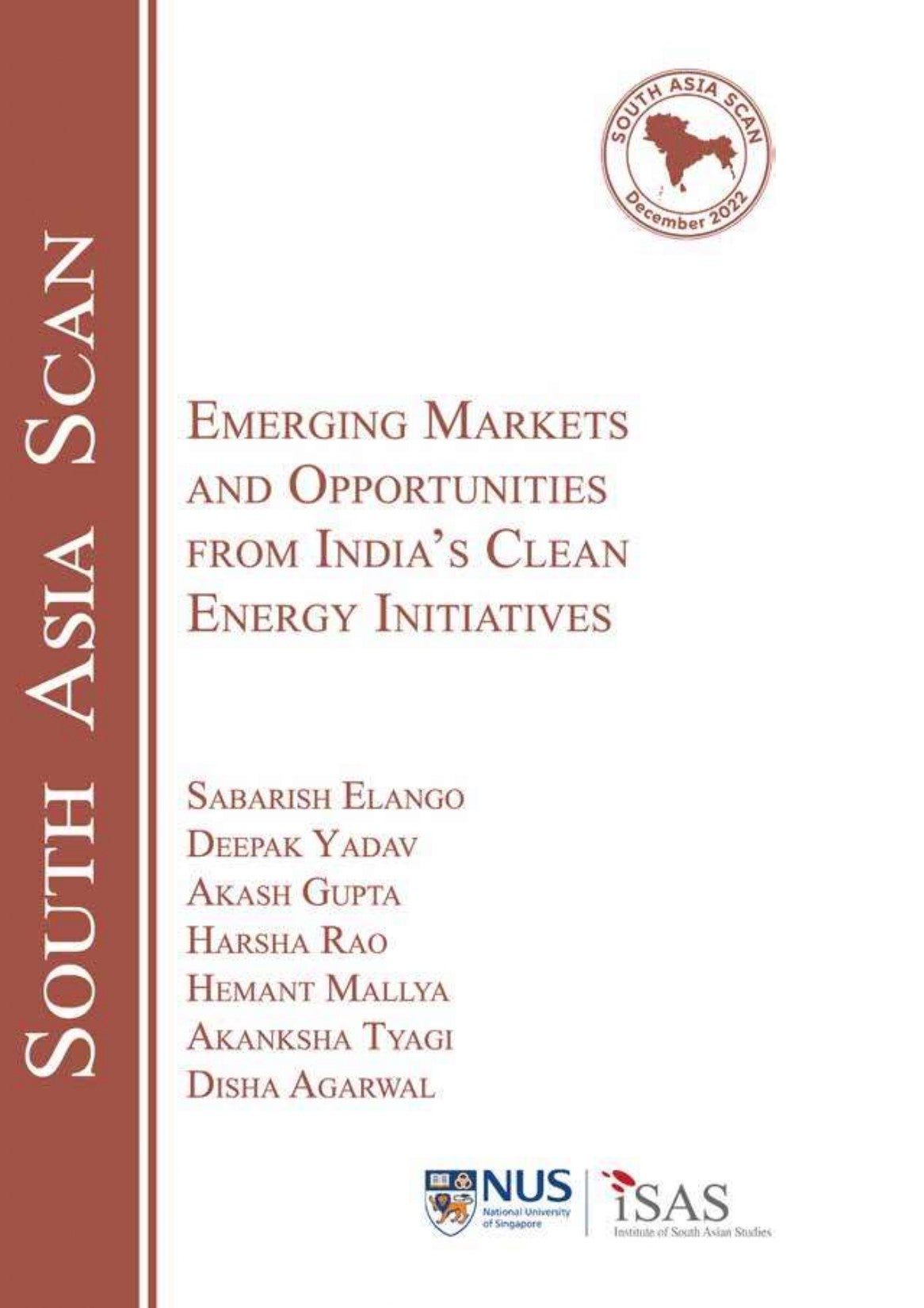Emerging Markets And Opportunities From India’s Clean Energy Initiatives
Sabarish Elango, Deepak Yadav, Akash Gupta, Harsha Rao, Hemant Mallya, Akanksha Tyagi, Disha Agarwal
28 December 2022India is today among the world’s largest energy consumers and will continue growing its energy demand for at least the next two decades. The steady economic growth and development are supported primarily by imported energy in the form of crude oil, coal and natural gas. The import share is expected to increase as the domestic supply cannot match the demand growth.
In 2021, 35 of the top 50 most polluted cities in the world were in India and the country is under increased pressure to switch to cleaner fuels. The need for emissions reduction to counteract global warming is increasingly dire. The Indian power sector and industry are heavily reliant on coal and oil products for energy, being among the most emission-intensive in the world.
This edition of the South Asia Scan examines four key sectors in India’s energy transition – renewable power, natural gas, bioenergy and green hydrogen. The current status and potential for growth in each sector are explored, along with initiatives taken by the Indian government and the private sector to stimulate development. The Scan also studies the potential for foreign investment and collaboration in each sector and the overall challenges and risks the country faces during the energy transition.
-
 More From :
More From :
-
 Tags :
Tags :
-
 Download PDF
Download PDF



